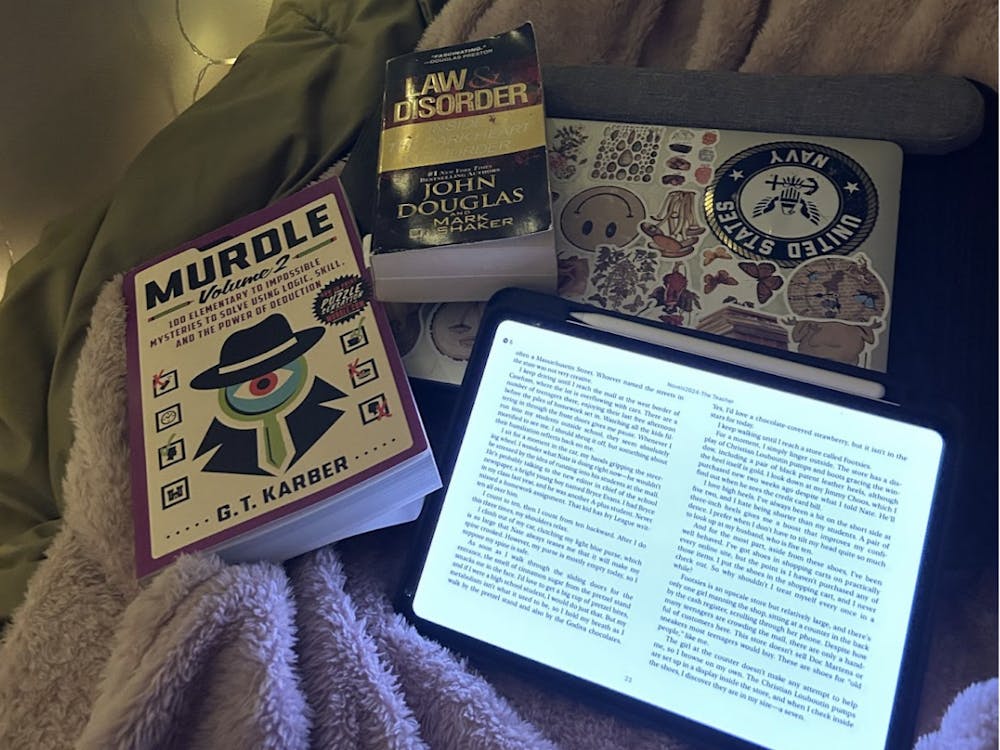When I was a kid, I used to pretend my life was a musical. This meant breaking into song and dance whenever I felt the situation called for such theatrics. (Some examples include waiting in line at McDonald’s, Mother’s Day brunch at the Country Club and swimming lessons at the local pool). As you can imagine, this didn’t always go over so well. But if I lived on a Broadway stage, bystanders would have enthusiastically joined in instead of just staring.
I’ve heard the argument that musicals are phony because in real life, people don’t sing and dance at every available moment. But the truth is that I always feel like breaking into song. It’s just the expectations of society that keep me from doing so. And I can’t be the only one who wishes my daily activities came with a soundtrack.
That must be why theater appeals to so many of us. Musicals allow characters to express themselves in ways we wish we could. If you feel sad, sing about it. If you’re in love, perform a nice duet. If you’re involved in some light gang warfare, follow the lead of the Sharks and the Jets and dance dueling choreographed numbers. Songs in the theater also work as convenient literary devices. Characters can reveal their inner thoughts as though no one else were there. These moments serve a similar function to the soliloquy, but are often more dynamic and entertaining to watch. While the lyrics can be immensely personal, theatrical conventions allow an entire ensemble to share in a collective musical experience. Sure it’s contrived, but the songs synthesize human relations into something tangible, understandable and memorable. This is especially effective for shows that focus on a person’s interior state of mind, something which is rather difficult to portray on stage.
I appreciate the benefits and particularities of musicals. You can usually depend on these staples, although the musical genre is diverse. I’m a fan of all sorts of sung fiction: the plays, the movies, the rock operas and the musical TV episodes. These vary greatly in medium, subject matter and tone, but the good ones share a sensitivity and willingness to dance across otherwise inaccessible emotions.
As I am a child of the Disney Renaissance Period of the 90s, I grew up on magical movies like Beauty and the Beast, The Little Mermaid, Aladdin and Pocahontas. From there, it was a natural transition to live musicals. The first Broadway play I saw was Aida, on my 13th birthday. It was beautiful and utterly tragic. This was a different kind of musical than the ones from Disney that I was used to; it was a grown-up story complete with forbidden love and a Shakespearean ending. Aida showed me than musicals could be more than silverware singing “Be Our Guest.”
After that came Phantom of the Opera (not my favorite), The Drowsy Chaperone, Chicago, Spring Awakening, Rent, Next to Normal, Wicked, Hair and plenty of other less pivotal pieces. Rent and Spring Awakening were both accompanied by lengthy obsessions before and after the actual show. (It’s good to hear the soundtrack first, grow fond of it and then fall madly in love when you see it live). Both of these plays proved that dark subject matter wasn’t off-limits for the supposedly light musical theater medium. In fact, music’s ability to immediately induce intense emotions is great for plays like Rent which span the range from jubilation to desolation.
Although I saw these popular modern musicals on Broadway, I got to know the classic pieces mostly through their film adaptations. I found West Side Story to be a wonderful (albeit extremely long) movie. Guys and Dolls introduced me to the stories of Damon Runyon as well as the inexorable force of nature that is Marlon Brando. His role as Sky Masterson is a bit more tame and family-friendly than other iconic performances like those in A Streetcar Named Desire and The Godfather, but it’s still clear why the man was a star. As someone cast as a lead in a musical, it’s unfortunate that Brando could not sing a note. But he acts well, of course, and Frank Sinatra picks up the slack with his role as Nathan Detroit.
Being a classic rock fan, I also enjoy those musical-like concept albums popular in the 60s and 70s. These tell a (usually strange) story with a series of songs, and they are much like a traditional musical, only a bit more elusive. From the concept album came The Who’s famed rock operas, Tommy and Quadrophenia, both of which were made into movies in the 70s. Tommy especially works as a piece of musical theater, as most of the story is contained within the lyrics. Its tale of a deaf, dumb and blind pinball wizard is an interesting mix of classic theatricality and 60s experimentation. Tommy the movie is also worth watching if only to see Roger Daltrey’s stunning performance as a long-haired, bare-chested messiah.
More recent attempts to combine classic rock with musical conventions include Across the Universe, whose soundtrack is entirely made of Beatles songs, and Velvet Goldmine, a fictionalized interpretation of the life of David Bowie. In both these films, actors perform songs of the time (the 60s and 70s), which, when combined in the right way, tell an interesting story. (This technique comes perhaps from the tradition of Mamma Mia, a romp of a play told through ABBA music).
Musicals may not be realistic, but they are an honest attempt to make sense of life. On stage, characters sing the thoughts they’d never say. Their world is different from our own, yet recognizable in its dedication to the authenticity of human emotion. In real life, you probably don’t work through your problems or celebrate your successes with the help of a catchy soundtrack.
But be honest: Don’t you wish you could?




